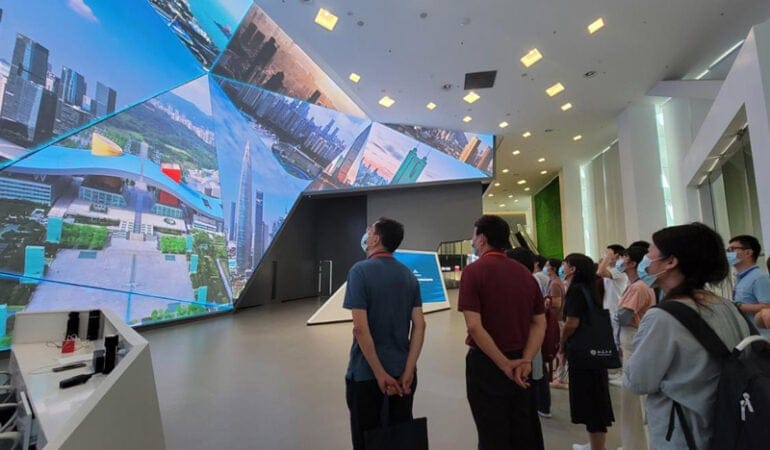
Room for Growth
Two hours east of the bustling metropolitan area of Shenzhen, China, a new city is taking shape in Guangdong Province. Formally known as the Shenzhen-Shanwei Special Cooperation Zone (SSSCZ), this 180-square-mile area is a national demonstration project that’s becoming something of a living laboratory for urban design, spatial planning, and land policy.
Initially established 12 years ago through a collaboration between Shenzhen, population 17 million, and the much smaller locality of Shanwei, population 500,000, the SSSCZ is located within the municipal boundaries of Shanwei. Home to about 80,000 people who live in scattered farming and fishing villages, the coastal area has been identified by the national government as a place that can accommodate industrial and residential overflow for Shenzhen, where developable land is extremely limited and expensive. The goal is to develop about 52 square miles of the area by 2035, when the population of the new city is expected to reach 1 million.
The Lincoln Institute recently helped organize a “Training the Trainers” course that included a field trip to the SSSCZ. One of the first Lincoln Institute programs to be held in person since the start of the pandemic, the course was organized jointly by the Peking University–Lincoln Institute Center for Urban Development and Land Policy (PLC) and Peking University Shenzhen Graduate School, and was designed to enhance the knowledge and skills of the participants in spatial planning and land policy. In addition to the SSSCZ field trip, participants attended lectures by prominent scholars and PLC specialists and took part in simulations aimed at finding land policy solutions.
“Part of the goal of the workshop was to brainstorm ways to design spatial policy for the area, and figure out how to pay for the costs,” said Shenmin Liu, a research analyst with the Lincoln Institute who helped organize the course. “We introduced land value capture tools and asked students to think creatively about the possibilities.”
The 37 participants, primarily young scholars, practitioners, and doctoral students from universities, research institutions, and planning institutions across China, met with local planners in the SSSCZ and learned about plans for the area. Those plans include developing a local harbor into a transportation hub and attracting companies involved in artificial intelligence, robotics, or other high-tech industries. Shenzhen already has firm footing in the technology sector, as the home of global companies including Tencent and Huawei.
The field trip helped the participants learn about the challenges of land policy reform in the context of a new spatial planning framework adopted in China, as well as the newly amended Land Administration Law. The latter requires better compensation for villagers whose land is taken for development, which should give farmers a fairer deal—but attaches higher costs to China’s rapid urbanization.
While the group was on site, Professor Shouying Liu of Renmin University delivered a lecture on land policy reform in China at the Office of the Administration Committee of the SSSCZ, attracting an audience of leaders and officials from various government agencies active in the cooperation zone in addition to the course participants. During the course, speakers also explored topics including land policy issues in the SSSCZ; spatial planning theory and practice; natural resource management and spatial planning; land value capture; property taxation; and smart-city development. Lincoln Institute President George W. McCarthy and Chair and Chief Investment Officer Kathryn J. Lincoln delivered virtual remarks.
Finally, the course introduced the methodology of gaming simulations for planning and land policy decisions, using the SSSCZ as a real-world case. The participants divided into five groups and took part in role-playing land use negotiations, then came up with various proposals to address the difficult land policy issues facing the SSSCZ. The gaming simulation methodology was first introduced to China by Dutch scholars through two training courses organized by the PLC and the Peking University Shenzhen Graduate School in 2018.
Each year, the Peking University–Lincoln Institute Center for Urban Development and Land Policy (PLC) offers a weeklong “Training the Trainers” course, with the goal of convening scholars and practitioners who can use the knowledge they gain to inform and develop materials for use in graduate and continuing education programs. The subject of the course varies, often targeting needs relevant to current policy reforms. Learn more about the PLC and its programs.
Katharine Wroth is the editor of Land Lines.
Photograph: Training the Trainers course participants learn about urban planning strategies and challenges in China’s Shenzhen-Shanwei Special Cooperation Zone. Credit: Shenmin Liu.
